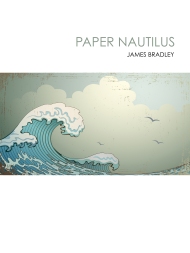Frederick Reiken, Day for Night
 Frederick Reiken’s third novel, Day for Night, begins with a quote from Jorge Luis Borges:
Frederick Reiken’s third novel, Day for Night, begins with a quote from Jorge Luis Borges:
“This web of time – the strands of which approach one another, bifurcate, intersect, or ignore each other through the centuries – embraces every possibility. We do not exist in most of them. In some you exist and I do not, while in others I do, and you do not, and in yet others both of us exist.”
At first blush Borges is simply making a point about possible worlds, an argument for contingency and chance. To embrace every possibility is to accept no one reality is privileged, no truth absolute.
Yet threaded into Borges’s words is another implication, a suggestion that to accept the infinity of possible worlds embraces every possibility is also to recognise that everything, in some deep sense, is connected, to glimpse something of the way each possible world contains and implies every other, of the way all of our lives bear within themselves other lives unlived, possibilities unexplored.
This vision, at once dizzying and consoling, lies at the heart of Day for Night, a book that seeks to illustrate the many deep and improbable ways that lives, seemingly unconnected, are in fact deeply intertwined.
Perhaps appropriately given its subject matter, the novel is constructed not as a unitary narrative but as a series of 10 discrete stories that are nonetheless connected, both by the intersecting lives of their characters and by their larger preoccupation with the way our lives are intimately connected to those of people we may never meet, or to historical events we may never understand.
At the novel’s centre lie a handful of characters, most significantly Beverly Rabinowitz, a middle-aged New York pediatrician, and the man who may or may not be her brother, Amnon Grossman, the Israeli curator of a wildlife park on the shores of the Dead Sea.
Around Beverly and Amnon moves a large and shifting cast: Beverly’s marine biologist boyfriend David, afflicted with terminal leukaemia, and his son Jordan; Beverly’s daughters Jennifer and Roxanne; the Florida diving instructor Tim, who shows Beverly a family of manatees moving in the moonlit water in the small hours of the morning; Dee, otherwise known as Gwendine, Tim’s sometime lover and the brother of the peripatetic Dillon, himself the friend of Amnon and husband of American veterinarian Vicki, who finds herself living and working on the Hai Bar Nature Reserve.
And beyond them, others, perhaps most significantly Beverly’s aunt Doris, who fled Poland via Lithuania during World War II; Beverly’s childhood friend Miriam, a psychoanalyst; and the fugitive former 1960s radical Katherine Clay Goldman.
Laid out in this fashion, the novel probably sounds hopelessly busy and contrived, but in fact the opposite is true.
Each story feeds elegantly into the next, allowing the novel’s larger design to emerge organically from the whole, an effect that is at first tantalising and finally deeply moving.
In part this is a function of Reiken’s writing. While occasionally his prose slips into blandness, there is a care and craft to the construction of the stories, and more particularly a pleasingly unshowy attentiveness to the voices through which they are told. Despite its structural audaciousness, there is nothing tricksy about the stories, nor about the human empathy and power of observation that lies at their heart.
And – almost as important – while almost all of the stories are capable of functioning independently, there is never the slightest suggestion the larger design is a conceit designed to unify an otherwise unconnected series of stories.
This is not to say the book is perfect. Certainly the storyline concerning the involvement of Dee and Dillon’s parents in a cult, and Dee’s multiple personality disorder seems ill-judged.
It’s possible Reiken is making a point about the way stories take on their own life and come to control us, but the material feels hackneyed and dated. Likewise, the figure of Goldman and, more particularly, her intrusion into the stories set around the Hai Bar Reserve and the suggestion that she is some kind of angel, or golem, pushes the book dangerously close to a sort of mystical sentimentality it elsewhere eschews.
Yet these are minor quibbles against the larger success of this wonderful, improbable and deeply moving book. In Day for Night, Reiken offers us a glimpse not just of the manner in which we are bound one to the other, but of the secret life of possibility we all carry within.
One may argue, of course, that this is what all fiction seeks to do. After all, it’s not coincidental E. M. Forster urged us to “only connect”. But it is also more than that, as Amnon reminds us in the book’s final pages:
“Stories are like dreams … They happen. They do not happen. They are right here. They exist in some other place entirely.”
Originally published in The Weekend Australian 1 May 2010.









Beautiful. Deft. Sometimes the meditation of philosophical questions stray into detail, and leaves the heart or human understanding to be off, held in abeyance, until Reiken picks it up again with vigor. At center of’ Day for Night’ is the quest to reason out, to somehow flesh out, what seems to matter most: human touch in a moment in time. One hand reaching out to hold the face of another. Mouths that find a world of questions silenced when brought together in a kiss. One person to another. This search of disparate narratives we tell ourselves to approximate an understanding of the “World.” Can fault in a moment of one person’s touch. A physical touch — narrated differently by each character, can still be experienced in a moment in time. Yes, Reiken is a master storyteller.